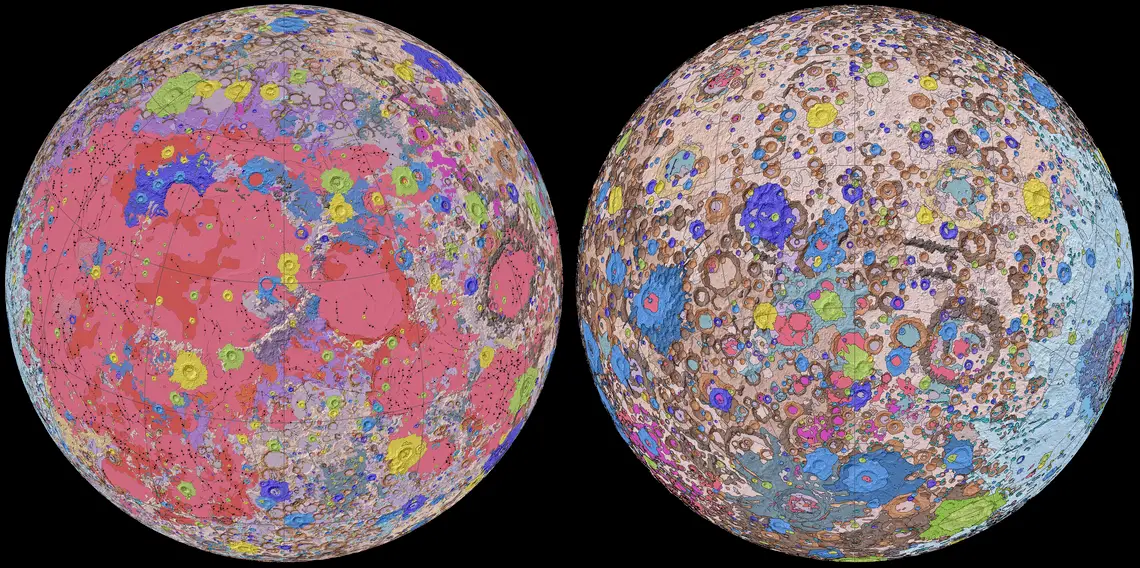The finally-departed year 2020 was so crazy on so many levels, that we all started to wonder if anything would ever be normal again. Fortunately, while life on Earth may never be the same, the Earth itself has maintained its normal, average, everyday existence.
To be fair, that normal, average, everyday Earth is pretty darned exciting from the human perspective. We experienced over 13,000 earthquakes, 70+ eruptions from more than 60 volcanoes, massive landslides, and some really awesome geological discoveries.
Sadly though, even an average geological event can have a devastating effect on human existence. This year started out with flash flooding and landslides in Jakarta, Indonesia, which killed 60 people. Some areas were left covered in literal tons of mud displacing nearly 200,000 people. And of course 2020 being what it was, it had to end the way it began — on December 30, a massive landslide struck in Ask, Norway, destroying houses and displacing hundreds of people, with 20 still missing.
Of the more than 13,000 earthquakes in 2020, only nine were a magnitude 7.0 or greater, and none of those were stronger than the 7.8 magnitude quake that struck offshore in Alaska on July 22. That one triggered a small tsunami, but caused no severe damage or injuries. Only one major earthquake in 2020 was not offshore — the 7.4 magnitude quake on June 23 in Oaxaca, Mexico, killed 10 people and caused major damage.
The deadliest quake of the year occurred in the Aegean Sea on October 30. The magnitude 7 quake collapsed buildings and killed 116 people in Izmir, Turkey, and killed two and caused major injuries to many on the Greek island of Samos. The second deadliest quake of 2020 was also in Turkey, a magnitude 6.4 on January 24 that killed 41 in the city of Elazig.

The Taal eruption. Credit: Aldrik Gohel
Not everyone realizes it, but volcanoes are constantly erupting somewhere on Earth. Some are, of course, more notable than others. The Taal eruption, which began in January in the Philippines, had explosive power similar to the 1980 eruption of Mt. Saint Helens in Washington State, killing 39 people and burying villages in ash. The Merapi eruption in Java in May featured massive pyroclastic flows and saw rapid deformation of the crater, leading to the evacuation of thousands of people.
The September 30 explosions in Sangay, Ecuador, left 50-100 million cubic feet of debris spread across the region. To close 2020, there were five new eruptions from Hawaii’s Kilauea, beginning the week of December 16.
Happily, not all volcanic news is fire and brimstone. In an exciting twist (for volcanologists, anyway), new evidence has been found that the Islands of the Four Mountains archipelago in the Aleutian Chain of Alaska may actually be one giant caldera that could rival the one in Yellowstone National Park.
Beyond the amazing destructive power of the Earth, the geologic world had some cool news this year. What is being hailed as the oldest known impact structure was discovered in Australia. The 70 km-wide structure is believed to be 2.23 billion years old, based on shock recrystallized minerals. The timing of the impact puts it right at the end of the Snowball Earth era, and may have been a catalyst to the warming shift.
A spectacular geologic map of the moon’s surface was generated by a team at the South Dakota School of Mines and Technology, who also came up with a unified description of the Moon’s stratigraphy. This new map will be invaluable to future Moon missions, and to scientists across many disciplines.

Credit: NASA/GSFC/USGS
Two new minerals were discovered this year — kernowite, finally identified in a single U.K. sample after passing through the hands of many scientists over the years, and donwilhelmsite, which was discovered in a lunar meteorite.
In the world of mass extinctions, direct evidence has been found that the burning of coal and vegetation in the Siberian Traps did indeed contribute to the Great Dying, or end-Permian extinction.
So if you’re looking for a constant to hold onto as we slowly, cautiously, and with our faces masked, creep out of 2020 and into 2021, look no further than the ground beneath your feet. Mother Earth is there holding steady for another glorious year.
AIPT Science is co-presented by AIPT and the New York City Skeptics.
Join the AIPT Patreon
Want to take our relationship to the next level? Become a patron today to gain access to exclusive perks, such as:
- ❌ Remove all ads on the website
- 💬 Join our Discord community, where we chat about the latest news and releases from everything we cover on AIPT
- 📗 Access to our monthly book club
- 📦 Get a physical trade paperback shipped to you every month
- 💥 And more!














You must be logged in to post a comment.